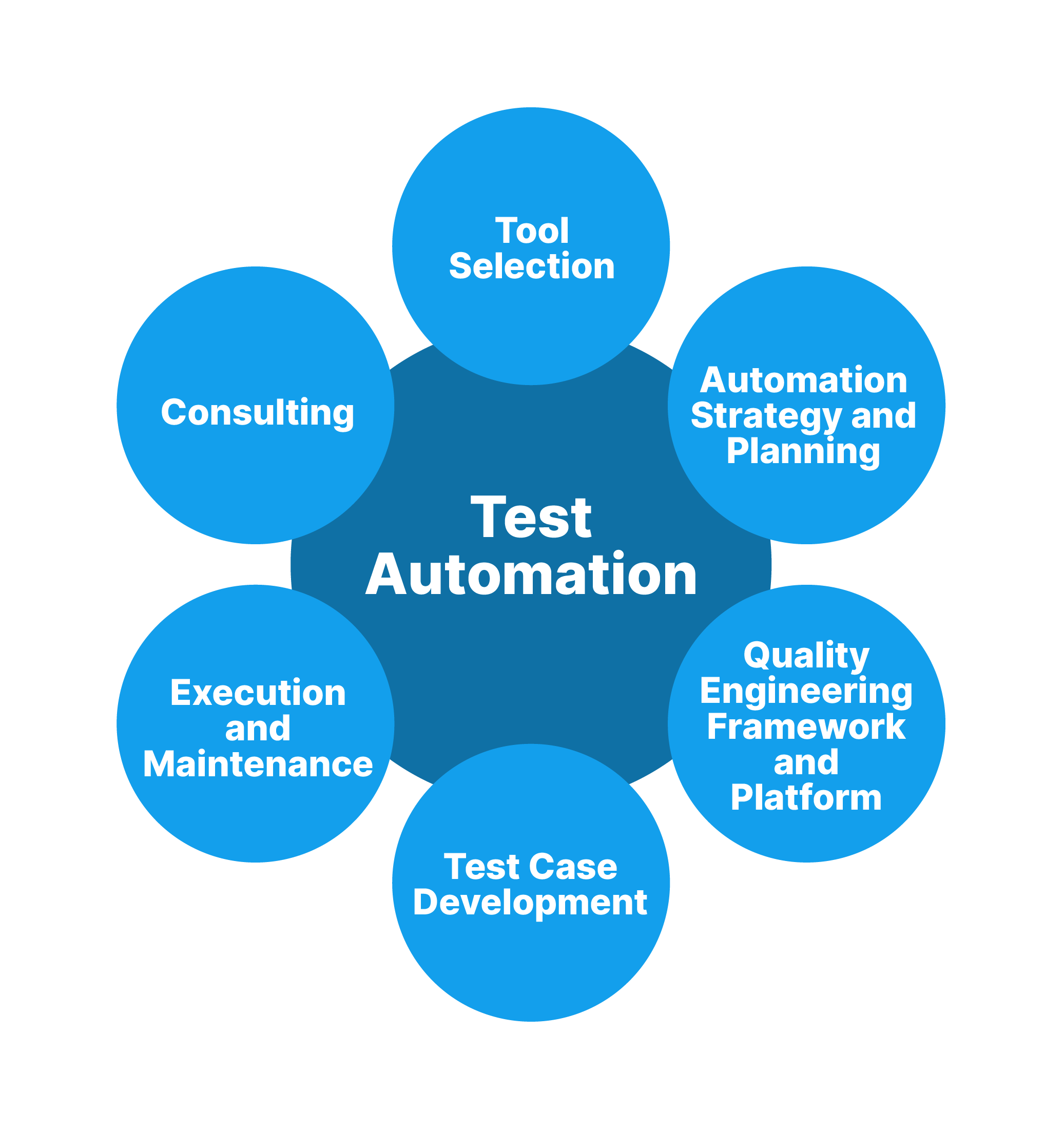From Handbook to Automated Screening: A Comprehensive Overview to Transitioning Smoothly and Effectively
In the realm of software application testing, the shift from manual to automated processes has become an increasingly essential transition for organizations looking for to boost performance and precision in their screening methods. As innovation remains to development, the need for seamless and effective automatic testing methods has actually never ever been extra important. The journey from manual to automated screening is not without its obstacles, however when approached strategically and with a clear plan in mind, the advantages can be considerable - automation testing. In this detailed guide, we will certainly discover vital actions and considerations important for an effective transition, from the initial option of devices to the combination of automation right into existing workflows. Keep tuned to discover the insights that will certainly assist lead the way for a smoother and much more effective screening process.
Advantages of Automated Testing
Automated screening offers many advantages, boosting efficiency and precision in software growth processes. One main advantage is the substantial decrease in testing time. Automated examinations can be run concurrently on several tools and operating systems, considerably quickening the testing phase contrasted to hand-operated screening. This enhanced performance permits for faster responses on the quality of the software program, making it possible for programmers to recognize and deal with concerns promptly.
Furthermore, automated testing makes sure a greater degree of accuracy in finding flaws. Given that automated examinations adhere to predefined manuscripts, human mistake is lessened, bring about even more trusted test results. Consistency in screening is additionally boosted, as automated examinations carry out the exact same steps precisely each time they are run. This consistency is crucial in making certain that all capabilities of the software program are completely checked, decreasing the possibility of undetected bugs sliding with to production.
Selecting the Right Devices

Firstly, assess your objectives and needs. Recognize the extent of your task, the modern technologies entailed, and the capability of your team. This analysis will certainly assist you figure out the functions and abilities you require in your screening devices.
Second of all, take into consideration the compatibility of the devices with your existing systems and processes. Seamless combination with your current software growth lifecycle is important to make certain a smooth shift to automation.
Additionally, evaluate the scalability and adaptability of the devices. As your testing requires progress, the tools should have the ability to adapt and accommodate adjustments successfully.
Finally, consider the assistance and neighborhood around the tools. When carrying out automated screening, robust assistance and an active customer community can give important sources and support. By carefully taking into consideration these aspects, you can choose the right tools that line up with your requirements and set the phase for a successful shift to automated screening.
Composing Reliable Test Scripts

When crafting examination scripts, it is essential to take into consideration the particular needs of the software application being checked and guarantee that the manuscripts deal with all critical performances. Clear and descriptive naming conventions for test manuscripts and test instances can enhance readability and maintainability. In addition, incorporating error handling devices within the test scripts can aid in determining and resolving issues immediately.
Furthermore, organizing examination manuscripts into modular elements can boost reusability and scalability, lowering redundancy and enhancing effectiveness in examination script maintenance. Routine testimonials and updates to evaluate scripts are critical to keep speed with progressing software demands and functionalities. By complying with these concepts, testers can develop robust and effective examination manuscripts that add significantly to the success of automated screening procedures.
Integrating Automation Into Workflows
Reliable integration of automation devices into existing workflows boosts and simplifies processes productivity within software advancement cycles. When integrating automation into process, it is vital to identify repeated jobs that can be automated to save time and minimize human mistake. By effortlessly incorporating automated screening tools like Selenium or Appium into the software development lifecycle, teams can achieve faster feedback on code changes, resulting in quicker bug detection and resolution. This integration permits continuous testing throughout the growth procedure, making sure that any type of problems are determined at an early stage, leading to higher software quality. In addition, automation can be made use of to cause examinations automatically after each code commit, providing prompt recognition and web link liberating testers to concentrate on even more complicated scenarios. Proper integration of automation tools calls for cooperation between development, screening, and operations teams to develop a unified process that optimizes performance and efficiency in delivering high-quality software.
Ensuring a Smooth Shift
Efficiently transitioning to automated testing includes thorough planning and careful implementation to optimize and minimize disruptions effectiveness in the software program growth procedure - automation testing. To guarantee a smooth shift, it is necessary to start by conducting a complete analysis of the existing screening procedures and identifying areas where automation can bring the most significant benefits. Engaging with all stakeholders at an early stage in the process, including designers, testers, and project managers, is important for gathering support and buy-in for the automation effort
Communication is essential throughout this shift phase. Clear communication of the goals, benefits, and expectations of automated screening assists to handle any type of resistance or problems that might arise. Additionally, supplying ample training and resources for team members to upskill in automation tools and techniques is important for making sure an effective shift.

Conclusion
Finally, transitioning from handbook to automated screening supplies countless advantages, including increased efficiency and dependability. By choosing the ideal devices, creating reliable examination scripts, and integrating automation perfectly into process, organizations can make sure a smooth and effective shift. It is necessary to welcome automation as a beneficial property in software program screening procedures to enhance general high quality and efficiency.
In the world of software application screening, the change from handbook to automated processes has ended up being a progressively important transition for organizations looking for to boost performance and precision in their screening methods. Automated tests can be run all at once on numerous tools and running systems, dramatically speeding up the screening stage compared to hands-on testing. Uniformity in screening is also improved, as automated examinations carry out the exact same steps precisely each time they are run.To try these out ensure the effective execution of chosen testing devices, the development of efficient test scripts plays a crucial duty in confirming the capability and performance of automated procedures - automation testing. By complying with these principles, testers can produce efficient and robust test manuscripts that add considerably to the success of automated testing procedures
Comments on “Automation Testing Structures: Streamlining Complicated Testing Situations”